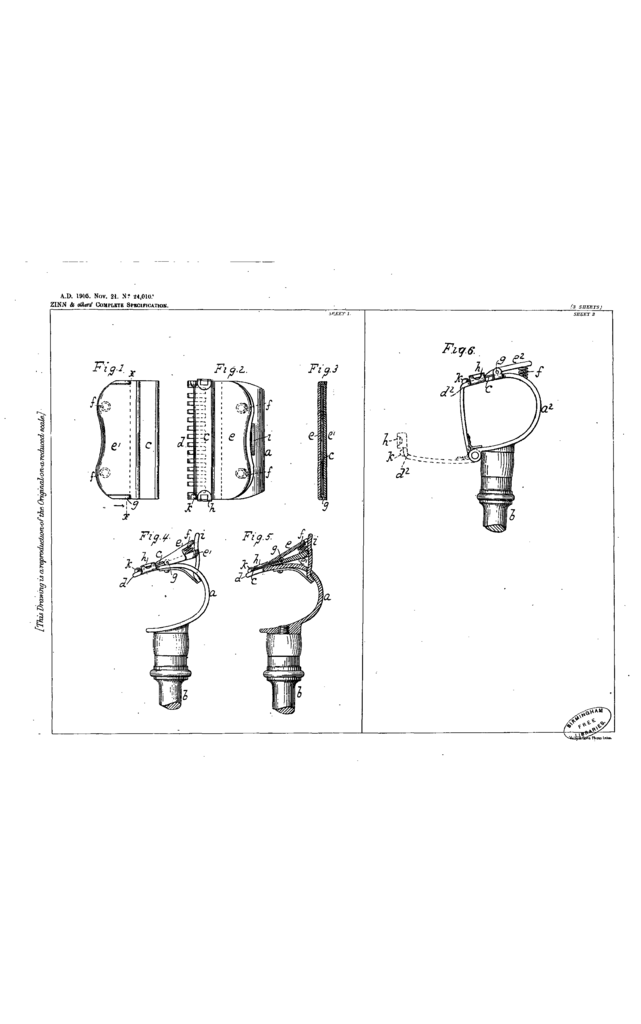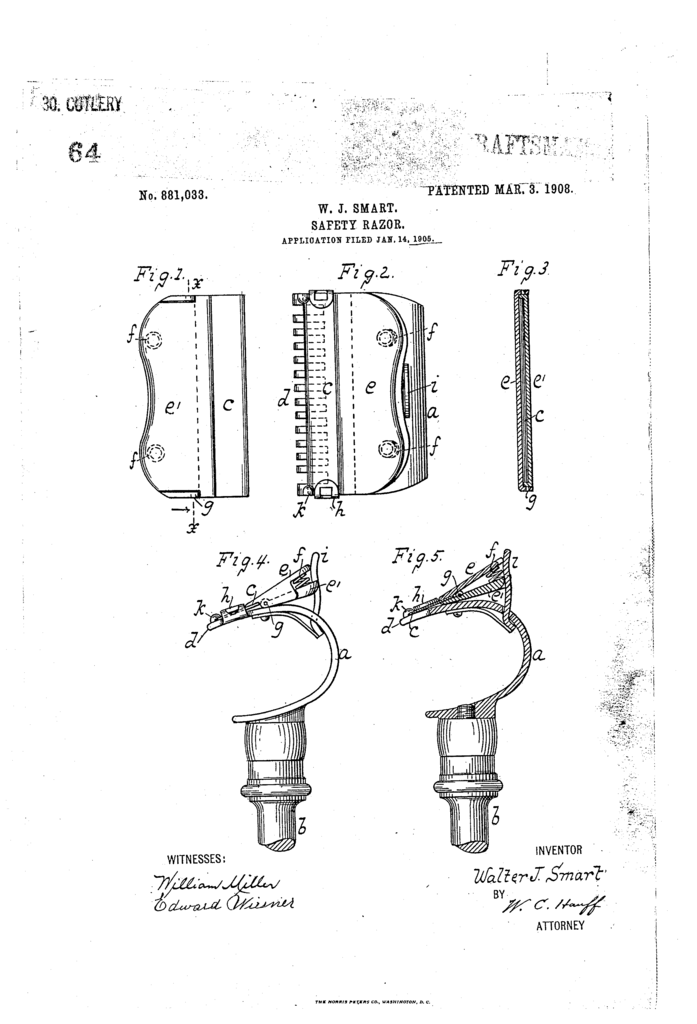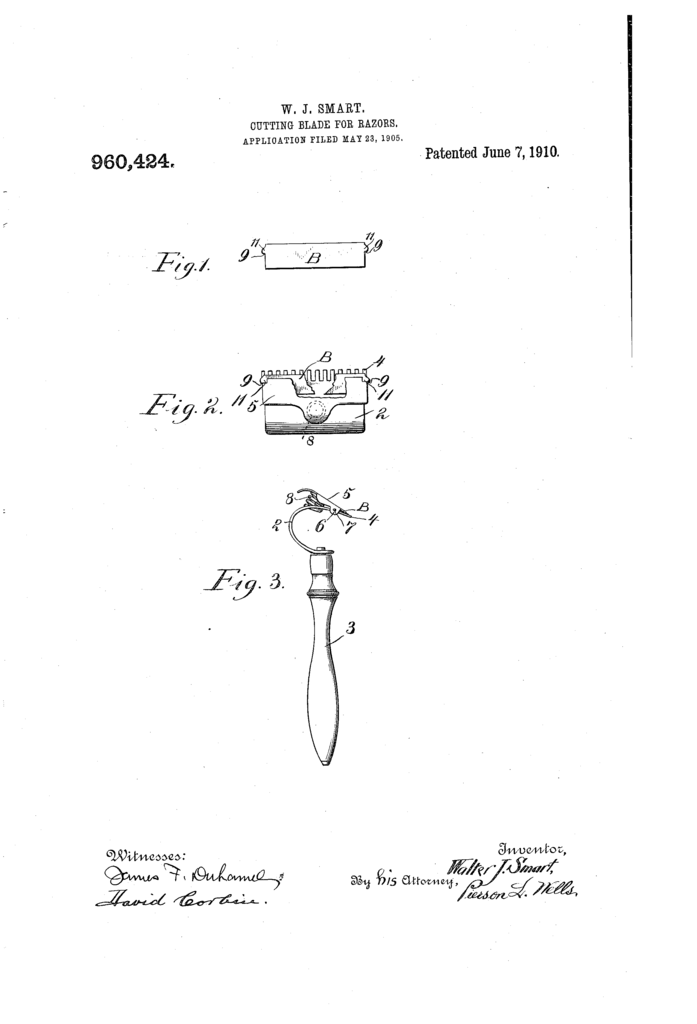Razor: Tatara Masamune
Blade: Lord Racer
Brush: Wilkinson Sword Badger
Lather: Williams Mug shaving soap
Aftershave: Barber No3 Marmara
Additional Care: Alum Block

Razor: Tatara Masamune
Blade: Lord Racer
Brush: Wilkinson Sword Badger
Lather: Williams Mug shaving soap
Aftershave: Barber No3 Marmara
Additional Care: Alum Block
A little while ago I wrote a post about the King Oscillator. I’ve decided to prod around a bit more, and what would you know… someone posted a video of it that gives a little more detail. More importantly, it shows how the blade move. Very instructive, if the drawings were not clear enough.
It is a short video – about one cup of coffee – so well worth watching. The same guy also have a video of using the King Oscillator, but I found that less worth watching.
Razor: Tatara Masamune
Blade: Lord Racer
Brush: Vie-Long #13051M
Lather: Goldex Nova Fórmula
Aftershave: Barber No3 Marmara
Additional Care: Alum Block
The safety razor was the cutting edge of shaving technology a hundred and twenty years ago. You could even say the bleeding edge, if your razor featured a replaceable blade that wasn’t quite secure… something Walter J Smart sought to fix with a trio of razor patents.
In chronological order, the patents are British patent 1905-24,010, US patent 881,033, and US patent 960,424. The all revolves around the same idea though; using a spring loaded top cap to pin the blade down. To quite from the earliest of the three, the idea was to:
…provide a razor of this character where in the blade may be easily inserted in its holder and withdrawn therefrom and which will be held accurately in place.
British patent 1905-24,010



As can be seen from the drawings, the basic idea is that a narrow blade is held in place by an arrangement similar in concept to the clothes pins I grew up with. The user would push the rear of the top cap down, insert a blade, and let go of the top cap. To remove the blade, the user would push down the cap and give the razor a shake. All the variations featured blade stops to prevent the blade for sliding too far forward.
I can see this design being easily adapted for most of the narrow single edge blades we use today – the various Feathers, Schick’s Prolines, injector blades… even half a DE-blade would work. And the patents are long expired, so it’s a free for all.
The patents are all available for your reading pleasure at EspaceNet and Google Patents, or alternately over at razors.click:
GB 1905-24,010 (alternate)
US 881,033 (alternate)
US 960,424 (alternate)
Razor: Tatara Masamune
Blade: Lord Racer
Brush: Vei Long “American style” 50/50
Lather: Asylum Shave Works Frankincense & Myrrh
Aftershave: Asylum Shave Works Frankincense & Myrrh
Additional Care: Alum Block
Razor: Gillette Slim
Blade: Lord Racer
Brush: Omega #10048
Lather: Prairie creations Walter
Aftershave: BullDog Sensitive Aftershave Balm
Additional Care: Alum Block
One way to make a profit selling razors in a cut throat market is lowering manufacturing costs. A way to cut cost of manufacture is to have the fewest possible parts, and the fewest possible steps. The easy way to achieve this is to design the razor to be easy to manufacture from the start, rather than trying to modify it later. You can’t get much simpler than one part and – as far as I can estimate – three steps. And that is how simple Charles Ballreich idea for a one piece single edge razor was. It is clear from the patent that ease of manufacture was a a primary objective. To quote from the introduction:
Continue readingMy invention relates to safety razors, and has for its object to provide an exceedingly simple, cheap, and effective safety razor, and to these ends it consists in the various features of construction and arrangement of parts adapted to co-operate in the manner substantially as hereinafter pointed out.
From US patent #855,608
Razor: Gillette Slim
Blade: Lord Racer
Brush: Semogue TSN LE 2012
Lather: Jabonman Mediterráno L.E. BullGoose
Aftershave: BullDog Original Aftershave Balm
Additional Care: Alum Block
Pereira charcoal soap is a soap I reviewed back in May ’18, and that I found to be a rather nice soap. And now it will be available in the form of a shave stick as well. The soap is the same as in the well known charcoal soap, and very similar to the blend found in Baron’s Choice (although the later does not have activated charcoal added).
I received one of the new shave sticks before they went on sale, and I must admit to enjoying it a lot.
Continue readingRazor: Gillette Slim
Blade: Lord Racer
Brush: Artesania Romera Manchurian Badger, imitation horn
Lather: Pereira Shaving Soap Stick w/ activated charcoal
Aftershave: Barber No3 Marmara
Additional Care: Alum Block